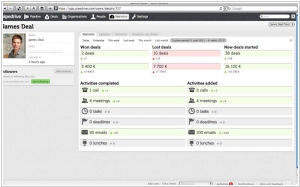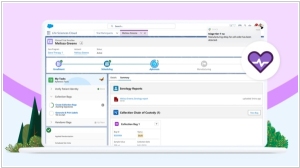Pipedrive vs Salesforce
May 18, 2023 | Author: Sandeep Sharma
75
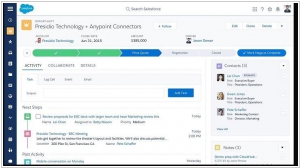
Most-popular CRM. Easy collaboration. Proven cloud platform. Salesforce.com offers everything you need to transform your business into a Social Enterprise, so you can connect to customers and employees like never before. With no software or hardware to install, you're up and running—and seeing a positive impact on your business—quickly.
Pipedrive and Salesforce are both popular customer relationship management (CRM) platforms that offer powerful tools for managing sales processes and customer data. Pipedrive is known for its user-friendly interface and simplicity, making it an ideal choice for small to medium-sized businesses. It focuses on streamlining sales pipelines and providing clear visibility into deals and activities. On the other hand, Salesforce is a comprehensive CRM solution that caters to businesses of all sizes, offering a wide range of features and customization options. It excels in scalability and integration capabilities, making it suitable for large enterprises with complex sales operations.
See also: Top 10 Online CRM software
See also: Top 10 Online CRM software
Pipedrive vs Salesforce in our news:
2023. Pipedrive unveiled AI-powered sales assistant
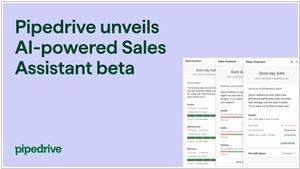
Pipedrive, the user-friendly and efficient sales CRM designed for small businesses, has unveiled its new AI-driven Sales Assistant, currently in beta. This innovative tool offers sales professionals insights into a deal's likelihood of success and suggestions for optimal next steps, significantly enhancing the chances of closing deals successfully. Companies that leverage the Sales Assistant experience a threefold increase in deal closures compared to those who don't. By incorporating AI capabilities into the Sales Assistant, Pipedrive aims to empower sales teams with targeted and actionable guidance, enabling them to further elevate their performance. The integration of AI into the Sales Assistant equips small businesses with a virtual assistant that utilizes cutting-edge technology to help them prioritize tasks, focus on key deals, and identify potential challenges in their sales pipeline.
2023. Salesforce to acquire Airkit.ai, a low-code platform for building AI customer service agents
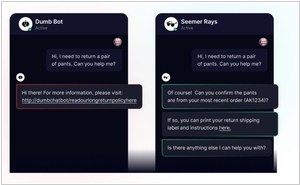
Salesforce is set to acquire Airkit.ai, a low-code platform designed to assist e-commerce enterprises in constructing AI-driven customer service agents. Initially conceived as a self-serve customer engagement platform, Airkit facilitated the integration of data silos and addressed various use cases like user onboarding. However, in a recent rebranding move, the company transformed into Airkit.ai and unveiled its inaugural integrated product, a GPT-4-powered platform enabling businesses like OpenTable and ShipBob to develop customized customer service chatbots capable of handling inquiries related to order status, refunds, product information, and more.
2023. Salesforce launches AI Cloud to bring models to the enterprise
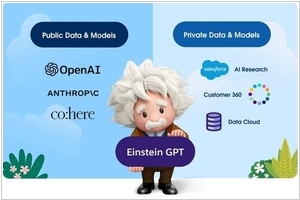
Salesforce is introducing a new collection of products with the goal of strengthening its position in the highly competitive field of AI. This suite, known as AI Cloud, consists of tools that are designed to provide AI solutions that are suitable for enterprise use. It represents Salesforce's latest effort to enhance its product lineup with AI capabilities across different disciplines. The launch of AI Cloud builds upon the company's previous generative AI initiative, which was introduced in March, aiming to incorporate generative AI throughout the entire Salesforce platform. AI Cloud serves as a hosting and delivery platform for AI models, specifically those focused on generating text, from a variety of partners such as Amazon Web Services, Anthropic, Cohere, and OpenAI. Additionally, Salesforce's own AI research division offers first-party models that power features like code generation and business process automation. Customers also have the option to bring their own custom-trained models to the platform while storing their data on their own infrastructure.
2020. Salesforce announces new Service Cloud workforce planning tool
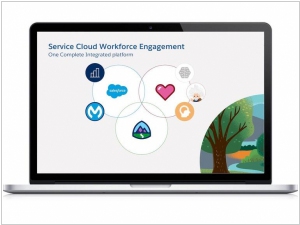
With a pandemic wreaking havoc in various parts of the globe, numerous companies are confronted with the challenge of managing dispersed customer service agents, leading to a complex workforce management situation. To address this issue, Salesforce is in the process of developing a new product called Service Cloud Workforce Engagement. Much like other Salesforce offerings, this solution comprises several crucial elements that work together to provide a comprehensive answer. Firstly, there is Service Forecast for Customer 360, a tool that utilizes AI to anticipate workforce requirements and intelligently allocate customer service requests. Furthermore, there is Omnichannel Capacity Planning, which aids managers in assigning customer service agents to channels like phone, messaging, or email based on the prevailing demand. Lastly, there is a training component designed to coach customer service agents on delivering accurate and appropriate responses tailored to specific situations.
2020. Salesforce applies AI to workflow with Einstein Automate
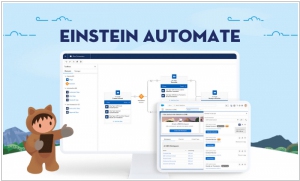
Salesforce has unveiled Einstein Automate, a new collection of workflow solutions powered by artificial intelligence (AI). Einstein serves as Salesforce's AI platform, encompassing all aspects of the company's product portfolio. It introduces automation to various tasks and simplifies the process of extracting valuable customer information, which often gets buried within vast amounts of data. Furthermore, Salesforce is incorporating MuleSoft, an integration company it acquired for $6.5 billion in 2018, into its offerings. This integration enables IT professionals to effortlessly build intricate connections between applications across the enterprise and the Salesforce suite of products, enhancing processes like mortgage approval workflows and more.
2020. Sales CRM Pipedrive becomes unicorn
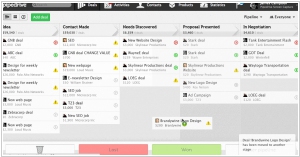
The latest European company to achieve unicorn status is Pipedrive, the sales CRM tool catering to small and medium-sized businesses. The company recently secured a majority investment from Vista Equity Partners, a U.S.-based private equity firm specializing in enterprise software. This investment has elevated Pipedrive's valuation to an impressive $1.5 billion. Pipedrive has always distinguished itself as sales software prioritizing the needs of salespeople, rather than just their managers. It was developed by sales professionals, for sales professionals. However, the platform has evolved into a comprehensive CRM solution that encompasses marketing functionalities as well. Pipedrive proudly boasts a user base of 95,000 companies relying on its software.
2020. Salesforce beefing up field service offering with AI
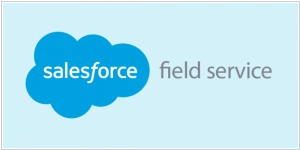
Salesforce is introducing AI-powered enhancements to its field service offerings, leveraging the capabilities of artificial intelligence. One of the key additions is Dynamic Priority, which allows the machine to set repair priorities based on factors such as service agreement type and criticality, streamlining call organization and enabling dispatchers to focus on other tasks. Furthermore, Salesforce aims to provide customers with a similar experience to tracking a driver's progress in a rideshare app. The introduction of Appointment Assistant, a new application, empowers customers to track the arrival time of their assigned repair person, ensuring they are aware of when to expect them.
2020. Salesforce announces a new mobile collaboration tool for sales called Anywhere
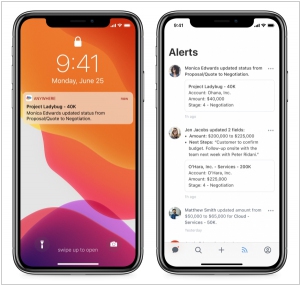
Salesforce has introduced a new tool called Salesforce Anywhere with the purpose of facilitating collaboration and data sharing among teams, regardless of their location. Recognizing the increasing significance of collaboration in a digital environment during the pandemic, the development of such an application became crucial for the company. The primary objective is to go beyond the confines of a traditional database and enable salespeople to access the most relevant information based on their sales pipelines. This tool allows employees to share information within their teams and engage in discussions related to that specific data. While there are other chat tools available, Salesforce Anywhere is specifically tailored for sharing Salesforce data, distinguishing it from more general-purpose platforms like Slack or other business chat tools.
2018. Salesforce allows to enter data to CRM via voice
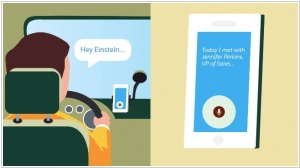
Sales managers are renowned for their verbal prowess, as talking is an integral part of their job. However, when it comes to entering customer data into a CRM system, they are faced with the arduous task of typing. Salesforce aims to alleviate this cognitive dissonance by introducing a new feature called Einstein Voice. This feature enables users to input data into the system effortlessly using natural speech. Just imagine, you hop into your car, open the mobile app, and have a conversation with a virtual assistant. You might say, "I just had a meeting with John Smith. He expressed interest in making a purchase but requested a follow-up call in a week...". The virtual assistant then dutifully adds a note to the customer's history in the CRM system. However, Salesforce might need to address the personality of their virtual assistant. It seems incongruous to task Einstein with such mundane responsibilities.
2018. Salesforce released new product - Customer 360
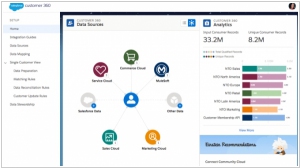
Customer 360 is an innovative software that integrates various customer data components to provide a more cohesive view within the Salesforce product family. Leveraging technology from Salesforce's Mulesoft acquisition, this solution aims to empower customer service representatives by equipping them with a comprehensive understanding of your interactions with the company. By eliminating the need for redundant information sharing, the representative can address your needs more effectively. The primary objective is to consolidate different product functionalities—such as sales, service, community, commerce, and marketing—into a unified customer view. Remarkably, this can be achieved without the need for coding, as highlighted by Salesforce.

